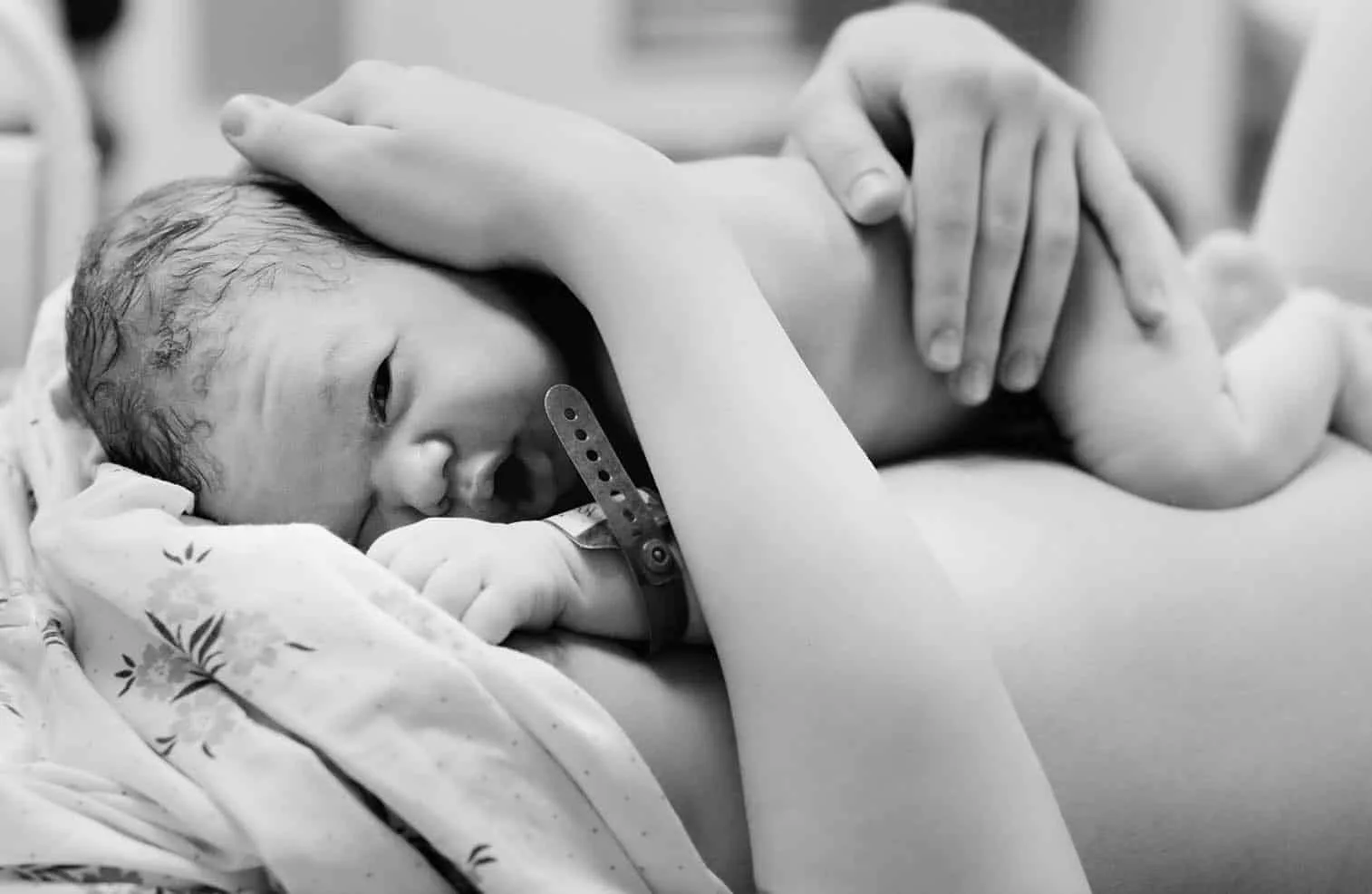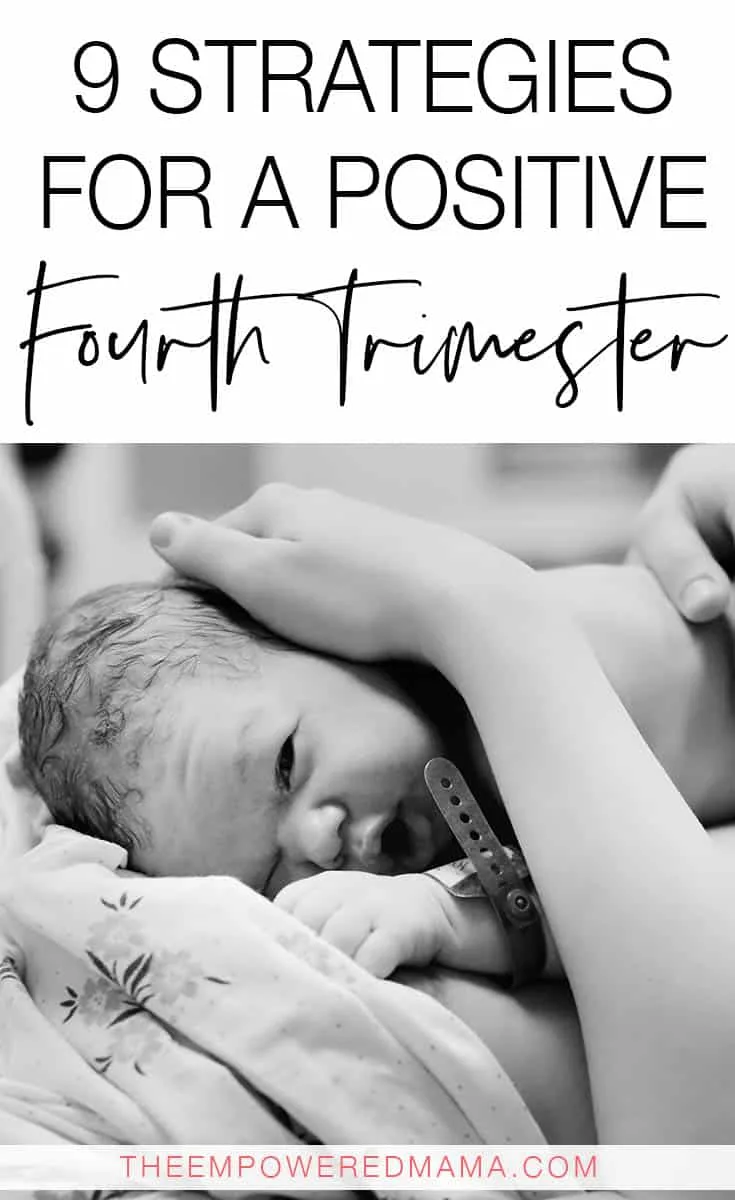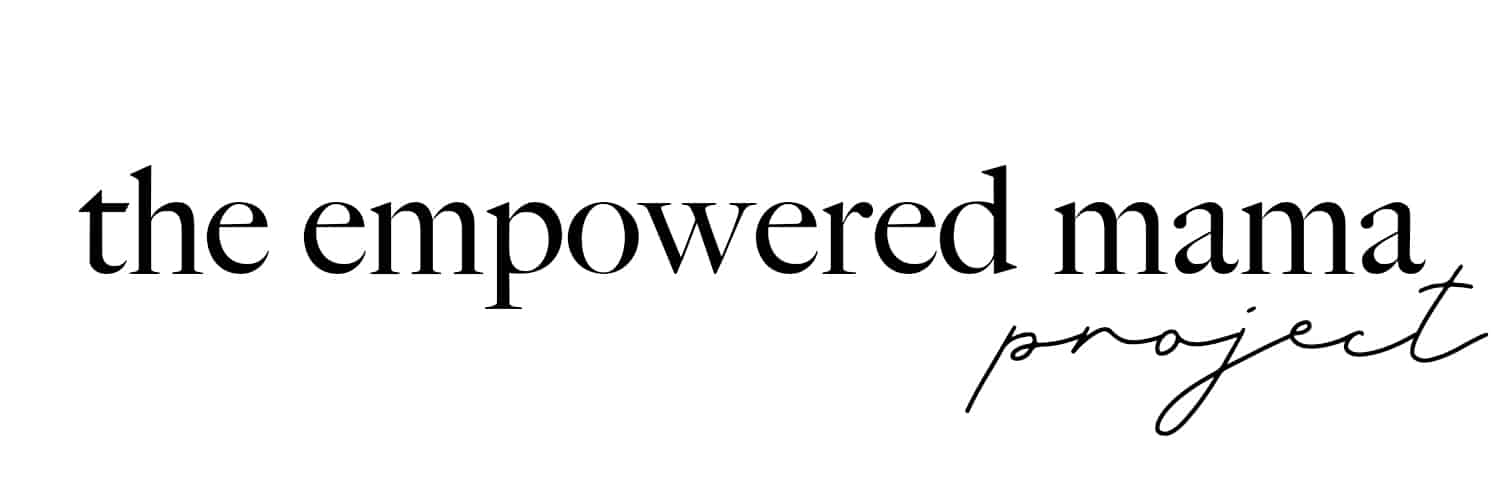You’ve spent the most part of a year growing and nurturing your babe in the cosy, warm environment of your womb.
Bub hasn’t experienced hunger, loud noises, the sensation of temperature changes and breeze against their skin, the feeling of a dirty nappy, clothing against their skin, smells like Great Grandma’s pungent perfume.
And they haven’t experienced separation from Mama.
The newborn days can be tough for all during the adjustment to life earth-side.
The first three months of a baby’s life are termed ‘the Fourth Trimester’ as a concept of extending the safe environment of the third-trimester into life outside the womb.
The concept is based upon recognising an infant’s need to thrive emotionally, as well as physically, through nurturing response of caregivers and development of secure attachment.
Below are 9 strategies you can use to nurture yourself as a new mother, and become in-tune to baby’s cues and learn to read their needs.
Baby can then trust that their needs will be met, making an easier and more sensitive communication network between baby and parent.
Who wouldn’t want an easier transition for everyone?
You might also notice some of these strategies are Principles of Attachment Parenting.
That’s because the way we care for our babes, particularly in the first few years, has a significant impact on who they become as adults and the development of their social and emotional intelligence.
Sensitive, instinctual parenting supports children to thrive.
1 – Begin With Birth – Skin to Skin
Educate yourself about the benefits of delayed cord clamping and skin-to-skin. They are vast.
Any decent Midwife should be a fierce protector of undisturbed hours following birth.
That means babe is placed skin-to-skin with mum for 1-2 hours, supported to feed at the breast as long as Mum & baby wish, and then placed skin-to-skin with Dad whilst Mama gets to have a refreshing shower and a bite to eat.
Weighing, measuring, poking, prodding, top-to-toe checks and vaccinations can wait.
There is no reason for these to be performed immediately after birth.
Babies benefit from skin-to-skin as it regulates their temperature, heart rate, respirations and blood glucose level, makes them feel safe, improves their early feeding and exploration of the breast, helps them pick up healthy bacteria from their caregivers, and keeps them feeling calm and safe, therefore their stress hormones are kept to a minimum.
What happens to babies in those early hours imprints on them – we want to get it right.
Mums will benefit through improved breastfeeding confidence, bonding, milk supply and reduced bleeding and rates of postnatal depression compared to women separated from their babies.
Dads also benefit from skin-to-skin through increased bonding and confidence in parenting.
Mum, Dad & baby all get a HUGE oxytocin boost through this incredibly simple act.
Skin to skin isn’t just for vaginal birth.
Mothers who have a caesarean are able to have skin-to-skin with baby whilst in Theatre, and continue to do so when moved into Recovery.
It is the role of Midwives to facilitate and protect these vulnerable hours.
For babies that require extra support in NICU or Special Care Nursery, it is known that skin-to-skin (aka Kangaroo Care) supports better weight gain in infants, improved breastfeeding rates, reduction in PND, more confidence in parents, better bonding, and shorter admission times of babes.
Even with feeding tubes and cannulas, Midwives can support you in having skin-to-skin as a strategy to help your vulnerable baby thrive.
Don’t let it stop there.
Continue using skin-to-skin at home, perhaps in a nice warm bath.
It can even continue through the toddler years, to support bub in times of illness, or to reconnect at the end of a long day if you’ve returned to work.

2 – Breastfeed on Demand
Long gone are the days of schedules and training babies.
Well, I’d like to say they are long gone, but I often hear horror stories of mothers being given very outdated, damaging advice about feeding and sleeping. That’s a whole other blog post in itself though.
You can find fantastic, helpful, current evidence-based information through any of Pinky McKay’s books (Sleeping Like a Baby, Parenting By Heart, 100 Ways to Calm the Crying, & Toddler Tactics) or Dr William Sears’ ‘The Attachment Parenting Book’… plus his many many other titles.
The most fundamental part to understand is this – babies are not developmentally ready for schedules and training.
If you introduce these strategies too early, you can completely miss an opportunity to help your child thrive socially and emotionally.
Breastfeeding on demand is a sensitive response to their communicated needs (cries and cues) and in doing so you are giving them a sense of trust and safety, not creating bad habits.
Breastfeeding on demand can contribute to developing a secure attachment, to help them grow into a confident, emotionally well young person.
‘The Milk Meg’ (Facebook/Online) is a great resource for breastfeeding/sleeping/settling support.
There are also numerous breastfeeding Facebook groups to join for support from other Mamas.
If you need practical support with getting breastfeeding started, finding an International Board Certified Lactation Consultant (IBCLC) can be the difference between an awful experience and a really good breastfeeding experience.
They are worth their weight in gold and can help you overcome challenges.

3 – Co-Sleeping
Hospital policy based education surrounding sleep does a huge disservice to families by simply saying “don’t put your baby in the bed or on a sofa”.
There’s really not much I can say about co-sleeping, bed sharing, safe & dangerous practices, benefits and SIDS prevention that Dr James McKenna doesn’t say in this MUST SEE video.
Educate yourself about safe sleeping practices and current evidence, to choose which options are best for your family.
4 – Baby-Wearing
Try not to overthink this one. A quick ‘baby-wearing’ search in YouTube will show up numerous different types of wraps, slings and carries, along with benefits of baby-wearing and how-to tutorials.
For the first few months of baby’s life – keep it simple!
You can become a baby-wearing crazed Mama with 7 different styles of carriers later, but for now, just pick one or two and wear it everyday like your favourite pair of jeans.
For a new babe in their first few months, ideal carriers are usually a stretchy wrap (my personal fave up to 4 months) or ring sling (my fave from 4 months to 18 months and still going).
Dads can get in on baby-wearing too. In those first few weeks, Hubby would often get up with our son in the morning, tie him on in a stretchy wrap, and play PS4 while I got more sleep.
To me it meant the world to get some shut-eye, and to him, the time he had to bond with his tiny snuggly boy is a memory he’ll treasure forever.
Benefits of wearing baby close to you, and why it is so important for a gentle transition from womb to world include:
- Improved social and cognitive development
- Baby cries less
- Gives Mum & Dad an extra soothing strategy
- Prevents Flat Head Syndrome
- More consistent weight gain
- Closely mimics the womb environment
- Easier Breastfeeding when out and about
- Stabilises baby’s heart rate, respirations and temperature
- Reduce reflux/wind symptoms
- Can help a premature baby thrive
- Baby gets more sleep
- Improved milk supply
- Freedom and convenience for Mum & Dad
- Reduces Postnatal Depression
- Ensures better bonding and more confidence as parents
- Helps you spend more time, hands-free, with your older kiddies
- Stops random people in the shops touching them and keeps germs away
- Easier to exercise, walk, and get out in the fresh air.
- You can go anywhere baby-wearing, but you can’t take a pram anywhere.
- Connection with like-minded Mamas – there’s a Facebook group for everything these days.
** It’s important to learn the T.I.C.K.S rule to safe baby-wearing and to understand the best position for a baby’s legs.
Many older style carriers where baby’s legs just hang down are thought to be detrimental to baby’s hips and physical development.

5 – Belief in Baby’s Cries
Belief in your baby’s cries is an element of Dr. William Sears’ Attachment Parenting.
Often you’ll hear, ‘ if you pick the baby up every time they cry, you’ll never be able to put them down’.
Ignorant, outdated and very unhelpful comments like this make us Mamas feel like when the times get tough, it’s because we’ve done something wrong – we’re failing – we’re doing wrong by our baby – we’re creating bad habits. WRONG, this is just so wrong.
It’s about time we appreciated our maternal instincts.
Our bodies are created to function perfectly.
We grow babies without even thinking about it. We birth babies!
Instinct and intuition is not a design flaw – it is there for a reason.
A simple rule to remind yourself when taking on information is ‘if it doesn’t feel right, or seem ok, then it’s probably not’.
And remember, what feels right for one family might not feel right for you.
‘Belief in baby’s cries’ means you are respecting that your little one is crying to communicate their needs with you – it’s their only way how!
Respond.
Respond every single time.
When it comes to keeping your sanity, personally I’m a big preacher of learning Dunstan Baby Language.
Our son is a spirited child, still is to this day.
At 7 weeks old, I was just about in tears from doing the same settling routine over and over again, trying so hard to be sensitive and responsive, yet nothing worked and baby screamed for hours while we nursed him. Every. Single. Day.
Usually, we’d eventually crash in a warm bath with some skin to skin.
I was having a mum-date with a friend. We got talking, and next thing she’s making me watch Dunstan Baby Language videos. I went home, raved about it to my Hubby.
We learnt together through YouTube videos and wrote out the sounds and their meanings on the fridge for an easy prompt.
From that day – we survived, and we survived well.
Everyone will have different experiences with it, but it was a game changer for us.
Have a look at this video to get an idea of what it’s all about, and watch as many videos as you can to learn it. It’s surprisingly really easy to learn!
6 – Set Boundaries
I’ve heard a lot of fourth trimester conscious families say it’s really nice to not have an inundation of visitors in the first week.
Everyone puts their own spin on it.
Some tell their friends and family they are happy for visits at the hospital, but then they’d like a few days at home to themselves.
Some just have immediate family and closest friends visit (in delegated times – see below) in the first week, and everyone else can wait.
You may be worried about offending people – don’t be.
People are actually quite understanding when it’s pointed out to them that you need space.
Personally, I see a lot of new parents struggle when they have lots of visitors in the first few days, whether in hospital or at home.
You’re tired, overwhelmed, learning and falling in love with your new baby, sore, disturbed by Midwives & Doctors wanting to check on you and baby, bothered by other women on the ward and their crying babies and noisy visitors.
Protecting this sacred time isn’t just about making it easy on you and babe, it’s about setting yourselves up for better outcomes with bonding and breastfeeding.

7 – Delegate
Everyone wants to show off their new baby. And everyone wants to meet a new baby.
Here’s a few things to consider to make your fourth trimester easier:
Delegate Visit Time
People tend to overstay their welcome when it comes to new babies.
When arranging the visit, tell them you’d love to see them at (insert time), but you wanted to get a rest in with babe at (insert time).
This is a gentle prompt for reminding excited and well-meaning visitors that it is tiring having a new baby, and you need to look after you.
Also, let’s bring it back to baby. They are only just out of the cosy womb.
Being inundated with noisy visitors who all smell funny to bub, and being passed around for cuddles, is not a gentle experience for them.
Limiting the time of visits, and the number of visits is really important.
Delegate Tasks
When we have a baby, time seems to stand still for a couple of days, we’re in a blur of birth and recovery and feeding and changing pads and so much love.
Then all of a sudden, the house is a mess and you realise time didn’t stand still at all. All ‘the things’ still need to be done.
If you can tolerate mess and let it go, that’s great.
It’s important to try to not care – the mess can wait, your baby will only be so little for so long.
If you’re anything like me though, looking at mess is really stressful. Having things that need to be done is stressful. And I find it hard to relax.
Your visitors will be more than happy to help if you let them – ask them “while you’re here, would you mind hanging out the washing?” or you may feel more comfortable getting them to hold baby while you get something done.
8 – Meal Prep
Make those early days as easy as possible for yourself.
The last thing you’ll want to think about when you have a newborn is “what are we having for dinner?”.
In the final weeks of pregnancy, you may get a sudden spike of energy, also known as ‘nesting’.
Use that energy to cook up some yummy batches of your favourite meals, and freeze into single serve microwaveable containers.
If you’re breastfeeding, you’re probably going to be really hungry.
Make sure you choose meals that are going to curb that hunger – lasagne, chicken curry with rice, stews, pea & ham soup.
You could also make up a batch of protein balls to snack on, or ‘lactation cookie’ dough to freeze.
Nothing beats a meal you didn’t have to cook though.
When people say ‘if there’s anything I can do, let me know’, ask them to bring you over a dish you can freeze or have for dinner that night.
9 – Be Kind to Yourself
Most importantly, be kind to yourself. Mum-guilt is inevitable.
It never goes away no matter how old you kid gets.
But to be gentle and sensitive to baby’s needs, you first need to be sensitive to your own.
It’s the whole ‘you can’t pour from an empty cup’ thing.
Communicate what your needs are with your partner. Don’t just soldier on, or assume they will know.
If you haven’t worn clean clothes for 3 days, that’s ok. If you haven’t gotten around to replying to all the messages from friends and family, that’s ok!
Go gently, breathe in your baby, try to look at life from their perspective, and just be in love.

























